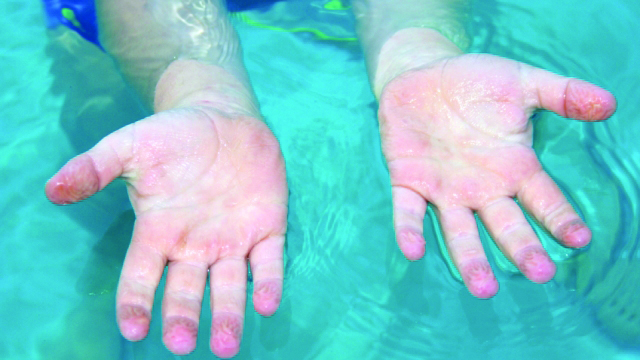You may remember staring at your hands after a bath as a little kid, intrigued by how your small, smooth hands had transformed into a wrinkled pair. “Look Mom, I have Grandma’s hands,” you might have said.
For centuries, “pruney fingers,” or what scientists call water-immersion wrinkling, was a mystery. No one knew exactly how it occurred or why. Many scientists attributed the wrinkles to osmosis, claiming that the skin was becoming waterlogged. However, two recent important observations undercut this common answer. First, water-immersion wrinkling only occurs in two places on the body: the hands and feet. Secondly, when a particular nerve is cut, the skin no longer becomes pruney after exposure to water. The selectivity of water-immersion wrinkling and the connection to the nervous system suggests another, more complex answer.
In 2003, neurologist Einar Wilder-Smith found that water-immersion wrinkling is driven by the constriction of blood vessels. He found that as water diffused through sweat glands in the hands and feet, the concentration of ions in skin tissue changes and this triggers a reflex that constricts certain vessels. When these vessels constrict, wrinkles appear.
Might this curious phenomenon have a purpose? Observing that the grooves formed on our fingers closely resemble “tire treads,” neurobiologist Mark Changizi postulated that this wrinkling gives our hands a better grip on objects, akin to how tire treads give cars a better grip by channeling water away. Indeed, a 2013 study found that the wrinkling did allow people to handle wet objects more quickly. How big an advantage this conferred as our ancestors adapted to their natural habitat remains the subject of future research.

